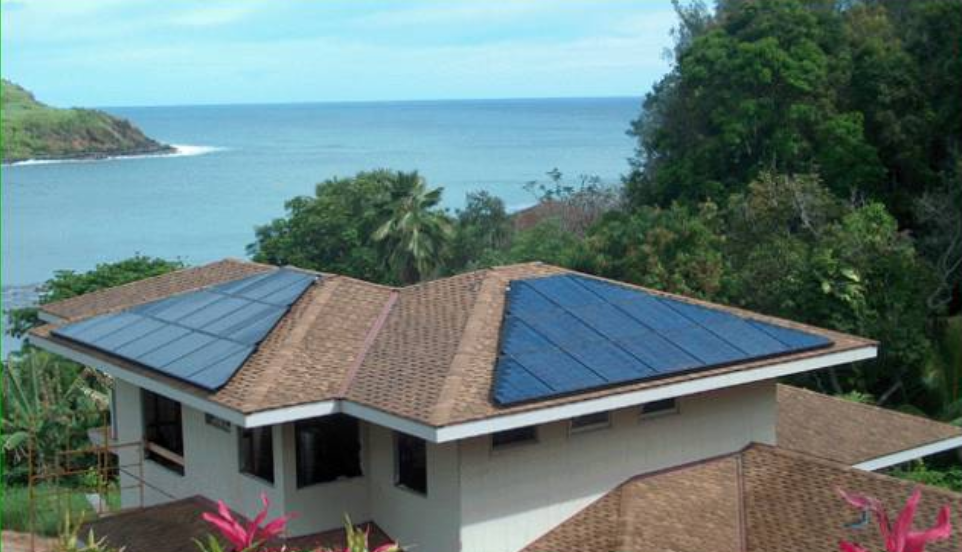often have friends[Photovoltaic Information] WeChat Platform (Micro Signal: PV-info), I asked how large-capacity photovoltaic power stations should be installed in my home. In fact, many friends outside the photovoltaic industry have fallen into a misunderstanding: I thinkphotovoltaic power station is related to household appliances.
in fact, in simple terms, photovoltaic power stations will not only supply power to a certain electrical appliance, but will supply power to the whole family. Photovoltaic power and the power of the national grid will supply power to the family together!
The above figure is a typicalthe schematic diagram of the grid-connected photovoltaic power generation system, it can be seen that photovoltaic power generation is given priority to the load. if photovoltaic power generation> load power consumption, electricity can be sold to the superior power grid. ifphotovoltaic power generation <load power consumption, the grid power and photovoltaic power together to supply power to the load, soyour photovoltaic power station is equivalent to a small tributary of the large power grid, which is merged into the large power grid together. you can have as much electricity as you want in your home. you don’t have to worry about how many electrical appliances there are in your home and whether the photovoltaic power station installed by yourself generates enough electricity!
so how can we know how big a photovoltaic power generation system to install in our home?
the most important ones arethreedeterminants:power grid company requirements,the electricity consumption and available installation area of the home.
according to the requirements of Shaanxi local power grid company, 220 volts can be connected at 8 kW and below. 8 kW ~ 400 kW can be connected to 380 volts; 400 kW ~ 6000 kW can be connected to 10 kV. So if the family is220 volt power supply, the maximum can only be accessed8 kW. At present, the national network and the south network have not clearly issued a document requiring the relationship between the grid level and the installed capacity!
household photovoltaic power generation systems generally adopt the mode of “self-use surplus electricity online”. The more electricity you use, the better the income and the more obvious the economic benefits! Therefore, the installed photovoltaic capacity should match the electricity consumption at home as much as possible!
on the other hand, if the roof area is large, you can try to lay photovoltaic installed capacity according to the capacity of the roof area. After all, the photovoltaic revenue is still good now!

simple calculation method:
Take the commonly used monocrystalline silicon photovoltaic module as an example. The length of a photovoltaic module is 1644mm, the width is 992, and the nominal power is 280 watts. The calculation shows that,per kilowatt of photovoltaic power generation system requires 6square meters..
photovoltaic power generation system can generate 1200 kilowatt-hours of electricity per kilowatt year.. (China has a vast area and a huge area, and the power generation in different regions is also very different. Take the power generation in the surrounding areas of Beijing as an example)

For example:
Lao Wang’s home uses 5000 kilowatt-years of electricity, and the roof can be installed with an area of 50 square meters.
According to the calculation method,Lao Wanghomes can be equipped with 3KW photovoltaic power generation system, generating 3600 kilowatt-hours of electricity per year, because homes use more electricity at night, and 3600 kilowatt-hours can basically meet all electricity consumption during the day!3KW photovoltaic power generation system requires a roof area of about 20 square meters, which also meets the conditions!
if Lao Wang wants to make full use of the roof of his home, he can install up to 8KW photovoltaic power generation system, which can not only satisfy the electricity consumption in his home, but also upload excess electricity to the national power grid to make money by selling electricity.
is related to the type of house, roof area, orientation and other factors. It can only be determined after professional personnel come to survey. After the installable area is determined, the size of photovoltaic power station that can be installed in the home can be determined.
